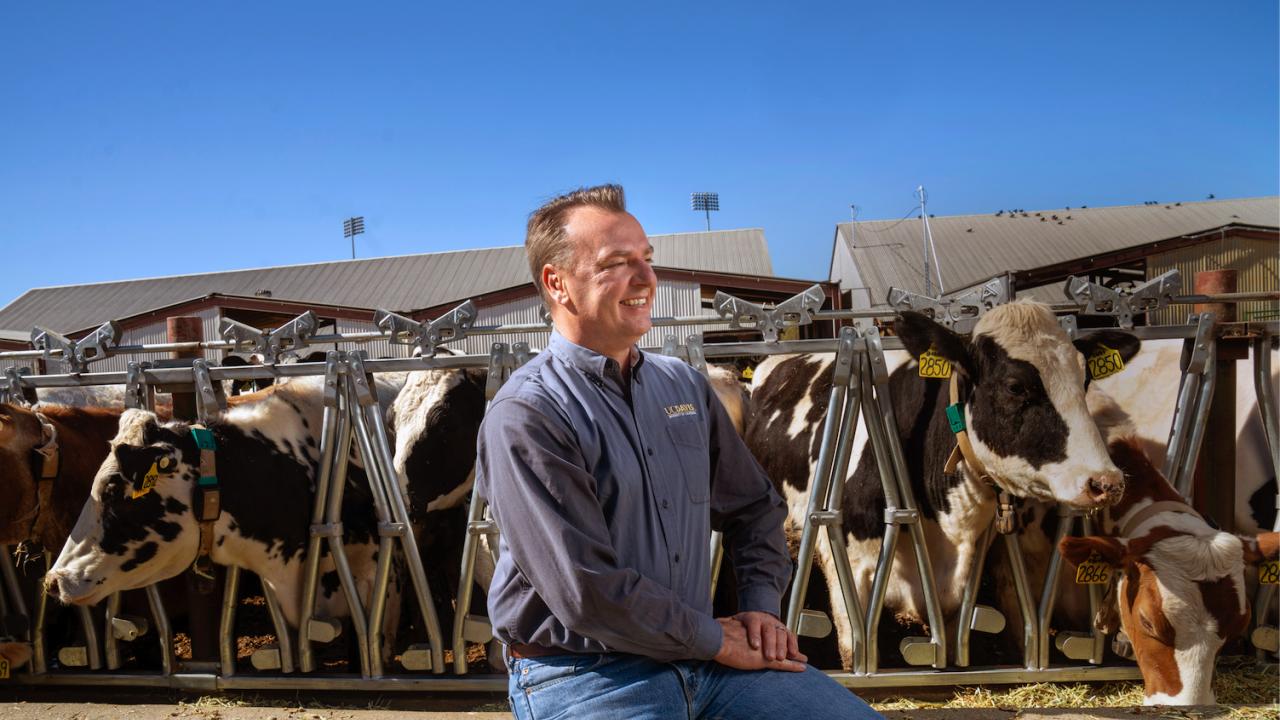
Frank Mitloehner Discusses Livestock, Climate Solutions and COVID-19 Impact on Greenhouse Gases on Podcast
In the age of information, it’s often difficult to filter facts from noise. In this episode of Elanco’s Rediscovering the Power of Healthy Animals podcast with Michelle Calvo-Lorenzo and Sarah Place, CLEAR Center Director, Frank Mitloehner, debunks common misconceptions around livestock and greenhouse gas emissions. He explains why scientists now believe the animal agriculture industry can be a leader in climate change solutions and how the myths often associated with livestock production are keeping us from working together to unlock this potential.
Has the coronavirus shutdown slowed greenhouse gas emissions?
This episode also dives into the drop in emissions seen around the world as COVID-19 halts the normal daily grind. What does this mean for animal agriculture?
Here's a transcription of that portion of the podcast:
Michelle Calvo-Lorenzo: So we're thinking again about COVID-19. We're seeing that less people are driving and flying so bring that back to the greenhouse gas emissions or just the air quality in general. What are your thoughts? Or maybe what predictions you may have? We're seeing these changes in behaviors relative to the fact that food production hasn't changed -- our animals are still getting fed there, still getting milked. You know, what do you think?
Frank Mitloehner: Looking at these different changes may be a good indicator for people who, again, are unsure about animal contribution to this – misperceptions about greenhouse gas emissions. I'm pretty active on social media, and I see those satellite images being shared of northern Italy and parts of China and California. Where in December air quality was really poor and then coronavirus hit and air quality miraculously improved. I mean drastically -- the northern part of Italy, in the Wuhan area and in the Central Valley of California, we see that something that was red in December, for example, for oxides of nitrogen. Now these areas are green. So the reason for that is emissions have gone down – largely emissions of fossil fuel consuming sectors – the transportation – cars, trucks, trains, trains, ship industries.
Everything has been shut down except for some essential industries such as health and food producers. So these fossil fuel sources are pretty much shut down and agriculture is still fully functioning - or largely functioning. What we are seeing now is an improvement in air pollution that originates from fossil fuel sources.
OK, that's really improving and less organic compounds are being seen— less oxides of nitrogen, less particles. The air quality is improving, but the pollutants that are associated with agriculture, such as ammonia or hydrogen sulfide or methane—those emissions are largely at the same rate as they were before the crisis. Agriculture has not really changed since the pandemic—pretty much normal rates.
It is a little bit of an apples to oranges comparison when we compare emissions before versus now during the crisis. The emissions that we are seeing that have gone down are largely associated with sectors other than agriculture. More transportation related industry. Those health related emissions that concern us that formed smoke and form particles and so on. They have gone down quite a lot, and the reason for that is that we're driving less. We're flying less, we have less mass transportation. That's an important distinction.
Listen to learn more.
You can also listen to this podcast on Spotify, GooglePlay, Soundcloud and iTunes.
